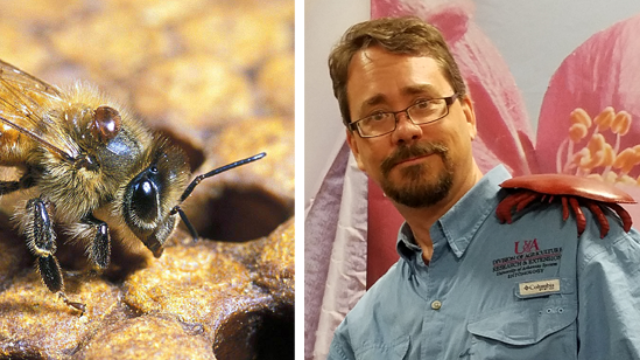RNAi Offers a New Option for Tackling the Number 1 Threat to Honey Bees
September 14, 2017
From: University of Arkansas, Division of Agriculture, Cooperative Extension Service via Technology Networks
 Varroa mite on an adult worker honey bee (photo by Stephen Ausmus, USDA-ARS), and proportionally sized mite, if scaled up to a human-sized host (photo by Landi Simone, Goose Rock Farm).
Varroa mite on an adult worker honey bee (photo by Stephen Ausmus, USDA-ARS), and proportionally sized mite, if scaled up to a human-sized host (photo by Landi Simone, Goose Rock Farm).
The varroa mite is the #1 threat to honey bees and the beekeeping industry around the world. These parasites infest just about every honey bee colony in the world, except for those in Australia. Originally a pest of the Asian honey bee, Apis cerana, these mites made the jump to a novel host, Apis mellifera, after people began moving the gentle European honey bee around the world. The trade and movement of bee stocks has exposed honey bee populations to many new and exotic diseases and pests, many of which have made their way to the U.S. in recent years.
The varroa mite was introduced into North American in the mid-1980’s and within a few years had spread coast to coast. Varroa is largely blamed for the demise of nearly all feral honey bee colonies in the U.S. within a few years. About the same time, U.S. beekeepers were faced with record low honey prices, due to competition from cheaper honey imported from Asia. Many beekeepers went out of business, while others began to move bees around for crop pollination in order to make ends meet. With fewer wild bees and fewer beekeepers, pollination services were increasingly needed, especially as the scale of agricultural production continued to grow. However, this increased movement of bees to meet these needs, combined with the widespread shipment of bees for hobbyist beekeepers, has resulted in the near universal distribution of honey bee pests and diseases, further compounding the bees’ problems.
Leave a Comment